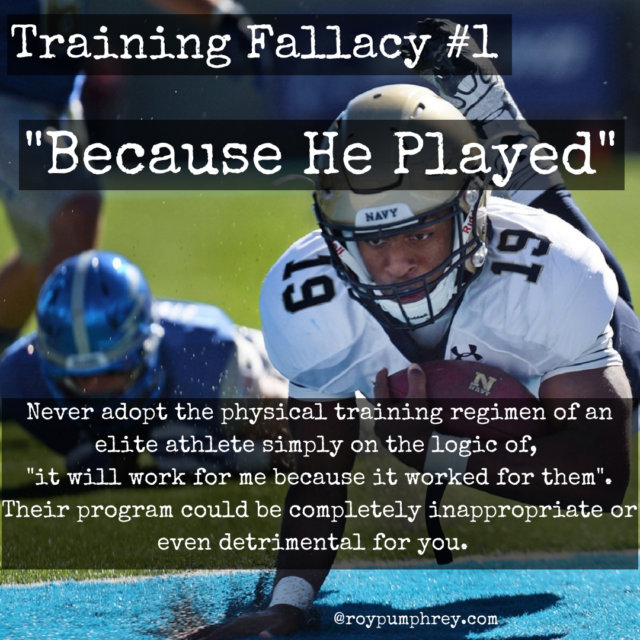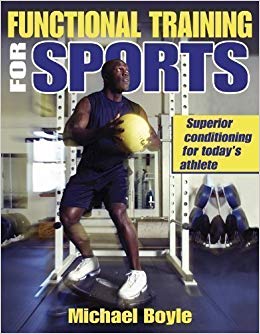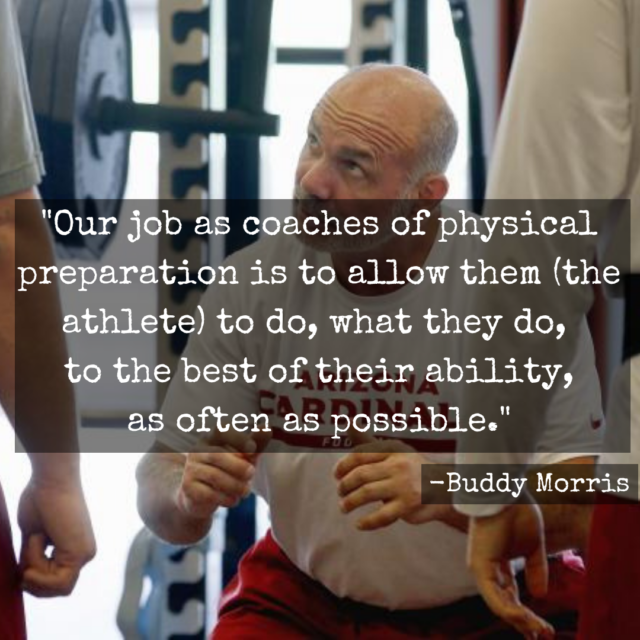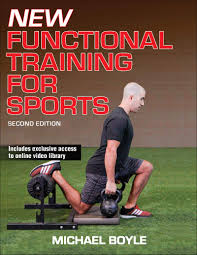 “I saw these really SPORT SPECIFIC workouts on Instagram.
“I saw these really SPORT SPECIFIC workouts on Instagram.
Maybe we could incorporate some of these exercises”
If I had a nickel for every time I got some variation of that line, I’d have at least $50.
Keep in mind, that’s 1,000 nickels.
Point Is:
I get that line often.
While it’s of good intentions it’s 100% uneducated and misguided.
Keep in mind, its not the clients fault.
“You Only Know Everything You’ve Learned”- Alwyn Cosgrove
And unfortunately for the last 2-3 decades the “fitness biz” has done a piss poor job of actually educating the public.
Instead, we used to hold “speed camps” and “combine training” where your kid would get faster in a weekend.
Or they would just learn some really basic technique and continually run the drill until they improved on it (hand timed, never electric) marginally and everyone would call it a success.
#stealingcash
How We Got Here:
The “Sport Specific” craze started in the late 1990’s/ early 2000’s as a response to the machine based training of the 70’s- early 90’s.
Machine based training was passed off by Arthur Jones of nautilus fame as a more effective and safe way to train.
Eventually, everyone realized they were duped by salesmen, selling pieces of equipment that mimic free weight movements but cost 3-6K a piece, and not sports scientist.
So the fitness pendulum swung back the other way and machine based training was viewed as probably not being the best form of training for sports performance.
This lead to,
Functional Training
Functional Training was intended to be training that is more applicable and transferable to real life and in this case sports performance.
The problem was, where there’s a fancy buzzword, there’s a marketer right behind it and “functional training” became hijacked.
“All training has a function. Therefore all training is functional” – Dr. Zatsiorsky
Soon, the only “functional” exercises were the ones on stability balls, wobble boards, balancing on one leg etc, etc.
The crazier, and more difficult, it became to preform the exercise the higher value that exercise was given in the functional training hierarchy.
And it lead to sh@t like this being accepted as effective training.
The more circus like and “balance” needed to perform the exercise the better.
Functional Training For Sports

The functional training era culminated in the release of one of the seminal consumer level strength and conditioning books, which is still full of valuable content all these years later.
But based on the cover alone, has (maybe) done more to damage performance training than any other product ever released.
Functional Training For Sports is a nice example of how the vast majority of people who saw and bought this book,
NEVER CRACKED IT OPEN AND READ IT.
#Ijustlookatpictures
I’ve actually heard the author, Mike Boyle, say something to the effect of (total paraphrase),
“That cover alone did more to ruin the book and my reputation than just about anything I’ve ever actually said or done”
This is the overly short version:
While the guy on the cover is doing some medicine ball thing on a wobble board, in the actual book, there is almost ZERO training that takes place on stability balls and wobble boards.
And very little with medicine balls.
Instead the majority of programming is things like:
Front Squats, Dumbbell Rows, Hang Cleans, Dumbbell Bench Press, Side Planks.
You know, good, traditional, training.
But wobble boards and medicine balls together?
What could be more functional?
Harder isn’t Better, Better is Better
And that’s why things like wobble boards with medicine balls became the epitome of functional training.
Simply because it was harder to perform an exercise, any exercise on an unstable surface, and following the Nautilus, machine based training craze, weights were vilified as dangerous (remember the salesmen selling machines that cost 3-6K a piece?).
So med balls and wobble boards became functional, and preferable.
But harder to perform doesn’t mean better or more transferable to the field.
What’s this got to do with Instagram?
Well, in the past 20 years or so thankfully the sports performance pendulum swung back the other way.
People started to look, not at what the guru on the mountain was preaching, but instead, real strength coaches, sports science and common sense was telling them.
This meant what was old, was new.
Free weights and what is from a spectator standpoint, really boring training became the norm again in elite weight rooms around the world.
Sure you’ll see things that you’ve never seen before and new, esoteric and specialized exercises.
Unfortunately, those are what get posted to the internet.
What Most People Never Realize is,
Those things you see on the Insta and the cool training montage in the pregame show?
Comprise a VERY SMALL Portion of a Training Program

Usually, what you’re seeing is the training that takes place at the margins of the program.
The 2-7% of the “sexy” stuff.
What you don’t see are all the other traditional foundational exercises that, to a normal person, are about as exciting as watching paint dry.
The problem is its that same 2-7% of the athletes training, the part that they put out to the world through media channels, that becomes thought of as “the key to their success”.
#itsgeneticsstupid
When it’s all you see it becomes easy to assume that the exercises you saw on social media are more important in the training plan than they actually are.
This leads to the,
Because He Played Fallacy:
Here’s how this goes,
- Famous (successful) athlete Billy Bob posts “workouts”, what are really just limited snapshots of training, to social media and talks about how effective they are.
- Fans (who usually have limited knowledge of the training process and sports science) see these “workouts” and assume that they’re the key to that athletes success.
“Billy Bob did these workouts and he’s in the NFL”
Because He Played Fallacy fulfilled.
Keep in mind the athlete rarely if ever gives hard performance metrics to back any of the performance claims.
Often instead relying on things like, “feeling stronger”, “working hard”, “feeling confident”, or my favorite #beastmode.
*Keep in mind, i’m not poo-pooing the psychology of the athlete believing in the training, but none of these feelings validate the training from a performance standpoint in any way.
The consumer usually doesn’t know what they’re looking at to be able to evaluate effective training.
They’re linking a snapshot of training time to elite performance not thinking about everything else that goes into the equation.
Successful, Because of, Or In Spite Of?
I would argue much of this social media inspired “training” is counterproductive but again, the athlete and the consumer doesn’t know.
It just looks cool, and “he played in the NFL” so it must be effective, right?
“Today was a good day for us,” Morris said, via Kent Somers of the Arizona Republic. “It wasn’t great. It wasn’t average. I saw some great things. I saw some things that make me want to go home and drink heavily.”
Morris was originally hired by Bruce Arians, so who knows, this might have been part of the plan.
Strength coaches are, by nature, an eccentric sort (Morris apparently doesn’t like wearing shoes). But he said it’s hard to gauge what kind of shape players will be in when they arrive.
Asked what would potentially send him to the bottle early, he replied: “Seeing some of our skill guys dragging. Fatigue is always going to be a factor in everything. I’m not a fan of personal terrorists. Everybody knows that.”
That’s his shorthand for personal trainers, and he’s not always sure they’re helping players to be ready for his program, particularly when the highlights of the workouts seem designed to show off on social media.
“I’m to the point now I’d rather have (players) do nothing because you’ve got to correct everything,” he said. “Also, not a fan of social media. It’s ruined this country. So when my guys walk into their personal terrorist, Facebook, Snapchat, Twitter, Instagram. That stuff is ridiculous.” –PFT

Instagram Workouts is Functional Training for the 2020’s
That’s all this is.
Just like Machine Based Training in the 70’s and 80’s, Functional Training of the 90’s and 2000’s, Social Media based workouts are just the new fad that often distorts what a real, effective training program is.
Not All Of It is Bad!
Also, just like machine based training and functional training, Social Media workouts can provide interesting ideas and valuable insight.
It just a matter of the consumer needs to put what they see into perspective. #context
This is best done by asking some questions:
- What is the relevance of these exercises in this particular athletes plan?
- How much of the entire plan do these exercises constitute?
- What part of the yearly plan is this training included in? (offseason, training camp, in season, rehabilitation from injury)
- Where is this athlete in their career (early, middle, near retirement, post retirement)?
- Do I understand the biomechanics and bioenergetics of the sport in question and that athletes positional needs?
- What are this particular athletes strengths and weaknesses and how do these exercises, performed in this manner, affect those?
- Was this athlete already elite? If so, in what way is this exercise contributing to sporting gains or maintenance?
I’m sure there are MANY more, those are just the ones off the top of my head right now.
But, The Exercises are “Sport Specific”
Much like “functional training”, this is a term that should die.
The only Truly “Sport Specific” exercises are the sport itself.
What we’re really talking about is Dynamic Correspondence
“Verkhoshansky’s dynamic correspondence attempts to logically piece aspects of training specificity into more quantifiable, directed components. These include the (a) amplitude and direction of movements, (b) accentuated regions of force production, (c) dynamics of effort, (d) rate and time of maximum force production, and (e) regime of muscular work (99).” – Dynamic Correspondence of Resistance Training to Sport
This means that just because something looks like the sporting movement, it might not actually have any transfer at all because it doesn’t actually mimic the joint-angle velocities, magnitudes of force or regimes of work,
“certain exercises may fit a majority of the criteria covered, but if they are not correctly loaded, varied, and sequenced, they may not result in a positive transfer of training effect.” – Dynamic Correspondence of Resistance Training to Sport
This is why so many exercises that look cool and are passed off as “sport specific” on social media are really just junk exercises that are at best having no influence on the athlete and at worst may be having a detrimental effect on the athlete.
Beware Your Ignorance
or
Always Have the Bullshit Detector Turned to 11
You don’t know what you don’t know.
So beware what gets passed off as “functional”, “sport specific” or effective.
In todays world of Social Media fitness influencers and sports performance gurus, a big name athlete or celebrity performing an esoteric movement is sure to get more likes and follows than a normal, everyday workout with traditional training modalities.
The Incentive Today is in Passing Off the Minutiae and Ineffective as the Secret Sauce
There is no secret sauce.
There never has been a secret sauce.
Btw, here’s the cover to the latest update on Functional Training For Sports:

Just a dude lifting weights, getting stronger.
Pretty damn functional for sports, if ya ask me.


